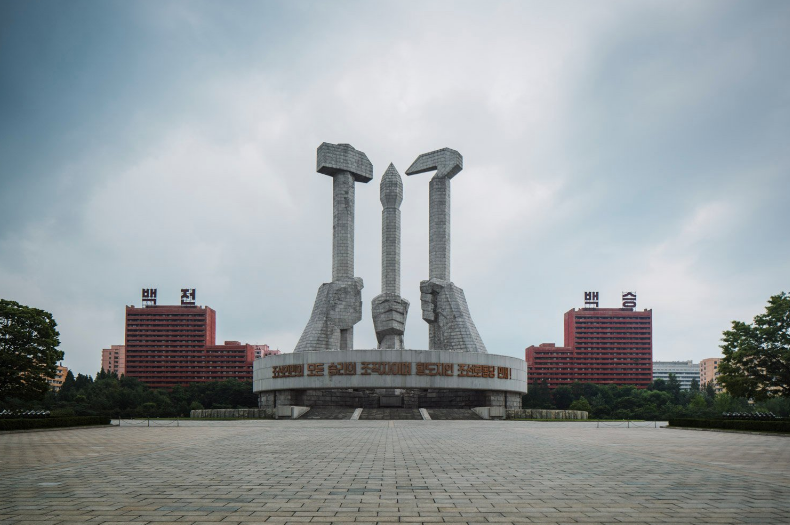A photographer captured these surreal photos on a tour of North Korea's capital

The Trump administration is weighing new legislation that would ban US citizens from traveling to North Korea, following the death of American student Otto Warmbier.
Despite warnings from the US Department of State over the years that visitors stepping into the DPRK risk arrest and long-term detention, approximately 100,000 people — including some Americans — visit the hermit kingdom annually. Tourists may travel independently or go through a state-sanctioned travel agency. They are supervised from the moment they arrive.
In 2016, photographer Raphael Olivier booked an architecture-themed tour of Pyongyang, the capital of North Korea, and captured these remarkable images.
"The first word that comes to mind would be eerie," Olivier told Business Insider of the general atmosphere in Pyongyang, North Korea.

There are some three million people living in the nation's capital, and yet, most of Olivier's photos show vacant streets.

He said people work, study, and keep busy out-of-sight in the daytime. Oddly, dramatic music blares throughout the downtown area.

It's a relatively new city and one that is still evolving. The US leveled the capital during the Korean War bombings, and the architecture of Pyongyang rose from the rubble after 1953.

The country's founding father, Kim Il-sung, conceived of the new Pyongyang as "a great garden of Juche architecture," or of self-reliance.

Concrete megastructures painted like Easter eggs dominate the skyline. These towers are meant to radiate strength, resilience, and national pride, according to Olivier.

While the buildings aren't all that elegant, their intended durability represents one of the chief tenets of Juche ideology.

"The city is an incredible showcase of beautifully preserved vintage socialist architecture, untouched by the visual pollution of commercial advertising billboards, flashy retails, or ugly office buildings," Olivier said.

The Pyongyang Ice Rink, constructed in 1981, looks like a futuristic wigwam. It has space for over 6,000 spectators.

Inside, Olivier found skaters of various skill levels killing time on the ice. Portraits of Kim Il-sung (the country's first supreme leader who also established Communism in North Korea), and his son, Kim Jong-il, hang overhead.

The Pyongyang International Cinema House sits mostly abandoned on the city's edge. The bare concrete and sharp edges draw from the principles of Stalinist neoclassical architecture.

The theater opens for special events, such as the Pyongyang International Film Festival, which is held every two years.

Pyongyang is hardly void of culture, according to Olivier, though it may be difficult to find.

"A very surprising aspect of North Korea is how real, simple, and human the place feels compared to how it is often depicted in international media," Olivier said. "It turns out people on the ground enjoy singing, laughing, and spending time with family and friends."

He also noticed few people glued to their smartphones, due in part to North Korea's chokehold on the internet. It was "strangely refreshing," albeit for an unsettling reason.

He watched a man get a haircut inside a state health complex.

Olivier even caught a show at the Pyongyang Grand Theater, where the North Korean Revolutionary Opera performed.

He snapped pictures when possible, mostly at designated stops on the tour. "As a tourist one is not free to walk around without guides," Olivier said. "The visited sites are carefully chosen and tours are well planned."

Upon entry to the country, visitors are instructed on what they can and cannot take pictures of. Customs agents inspect your cell phone and other digital devices, including cameras, tablets, and storage cards, for banned content on your way out.

In Pyongyang, you see what the government lets you see.

Check out more of photographer Raphael Olivier's work here.
Read more:
• This chart is easy to interpret: It says we're screwed
• How Uber became the world's most valuable startup
• These 4 things could trigger the next crisis in Europe
Read the original article on Business Insider UK. © 2016. Follow Business Insider UK on Twitter.
Join our commenting forum
Join thought-provoking conversations, follow other Independent readers and see their replies
Comments
Bookmark popover
Removed from bookmarks